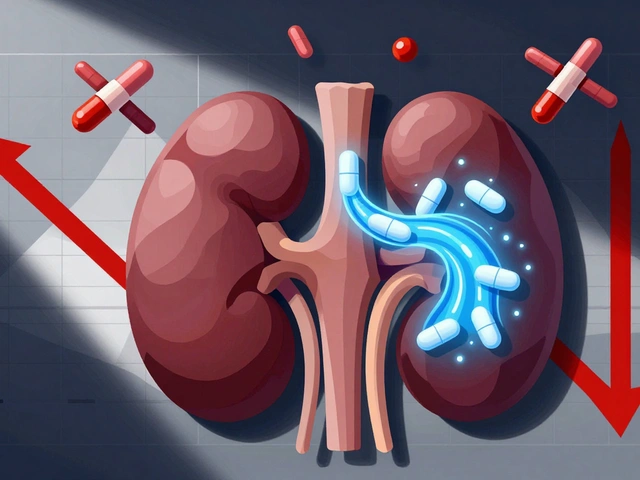
Introduction to Calcium Carbonate and its Role in Batteries
As a blogger who is passionate about sustainable energy solutions, I have always been intrigued by the use of innovative materials in battery production. One such material is calcium carbonate, a common compound that is increasingly being explored for its potential in the field of energy storage. In this article, I will discuss the various ways in which calcium carbonate is being utilized in the production of batteries, and how this versatile compound is shaping the future of energy storage.
Understanding the Composition and Properties of Calcium Carbonate
Calcium carbonate is a naturally occurring compound, often found in limestone, marble, and other minerals. It is composed of one calcium ion and one carbonate ion, giving it the chemical formula CaCO3. Calcium carbonate is a versatile material, known for its high thermal conductivity, low electrical conductivity, and excellent mechanical properties. These properties make it an attractive candidate for use in a variety of battery applications.
Calcium Carbonate as a Key Component in Lithium-ion Batteries
Lithium-ion batteries are the most commonly used type of battery in portable electronics and electric vehicles. Calcium carbonate has emerged as a promising material for use in lithium-ion batteries, particularly in the development of cathode materials. By incorporating calcium carbonate into the cathode, researchers have found that it is possible to improve the overall performance, energy density, and stability of the battery, making it more efficient and longer-lasting.
Enhancing the Safety of Batteries with Calcium Carbonate
One of the major concerns with lithium-ion batteries is their potential to overheat and catch fire. Calcium carbonate can help address this issue by acting as a flame retardant. When incorporated into the battery's electrolyte or separator, calcium carbonate can help prevent thermal runaway, which occurs when the temperature inside the battery rises uncontrollably. This added layer of safety makes calcium carbonate an essential component in the design of safer, more reliable batteries.
Calcium Carbonate in the Production of Solid-state Batteries
Solid-state batteries are a promising alternative to traditional lithium-ion batteries, as they offer greater energy density and improved safety features. Calcium carbonate plays a critical role in the development of solid-state batteries by acting as a solid electrolyte. This electrolyte enables the transport of ions between the anode and cathode, allowing the battery to function efficiently. Furthermore, the use of a solid electrolyte helps to eliminate the risk of leaks and fires associated with liquid electrolytes.
Calcium Carbonate as a Cost-effective Solution for Battery Manufacturing
One of the major advantages of using calcium carbonate in battery production is its cost-effectiveness. As a naturally abundant material, calcium carbonate is relatively inexpensive and easy to source. This makes it an attractive option for battery manufacturers looking to lower production costs and make energy storage solutions more affordable for consumers.
The Environmental Benefits of Calcium Carbonate in Battery Production
In addition to its performance and cost advantages, calcium carbonate also offers environmental benefits when used in battery production. The mining and processing of calcium carbonate have a relatively low environmental impact compared to other materials used in batteries. Furthermore, the use of calcium carbonate in batteries can help to reduce the overall carbon footprint of the battery manufacturing process, as it has the potential to absorb and store carbon dioxide during its production.
Challenges and Future Directions in Calcium Carbonate Battery Research
While calcium carbonate holds great promise for battery applications, there are still challenges to be addressed in order to fully realize its potential. Researchers are currently working to optimize the performance of calcium carbonate-based batteries and develop new materials and designs that can further enhance their capabilities. As the field of calcium carbonate battery research continues to advance, it is likely that we will see even more innovative and sustainable energy storage solutions emerge in the coming years.
Conclusion: The Bright Future of Calcium Carbonate in Battery Production
In conclusion, calcium carbonate is proving to be a valuable material in the production of batteries, with applications ranging from lithium-ion to solid-state technologies. Its unique properties, cost-effectiveness, and environmental benefits make it an attractive option for researchers and manufacturers alike. As we continue to explore the potential of calcium carbonate in battery production, we can look forward to a future of more efficient, safe, and sustainable energy storage solutions for our everyday lives.









8 Comments
Wow calcium carbonate is really shaking up the battery world. It's amazing how a cheap rock can make our gadgets last longer and stay safer. I love seeing sustainable solutions become mainstream. Keep the good stuff coming
Calcium carbonate in batteries sounds like techno‑optimism masquerading as progress :) The material barely changes the electrochemical fundamentals and you end up with hype over marginal gains The flame‑retardant claim is overblown when you consider modern electrolyte additives The cost argument ignores the hidden processing steps that add complexity The industry should focus on real breakthroughs not on repurposing limestone
Calcium carbonate serves as a solid filler that can improve the mechanical stability of cathode composites. By buffering volume changes it helps maintain electrode integrity during charge cycles. Its high thermal conductivity also aids in dissipating heat, reducing hot‑spot formation. When used as a component in solid electrolytes it provides pathways for ion transport while keeping the structure robust. The material is inexpensive and abundant, which lowers the overall cost of battery packs. Integrating CaCO₃ thus balances performance, safety, and affordability.
Indeed, Hilda, the inclusion of CaCO₃, while seemingly modest, actually contributes a multifaceted set of benefits; its role in mitigating electrode pulverization, for instance, cannot be overstated. Moreover, the thermal management aspect offers a passive safety mechanism, which, coupled with the solid‑state electrolyte’s inherent stability, presents a compelling case for further development. Your concise summary captures the essence, yet I would add that the particle size distribution critically influences the ionic pathways-something that researchers must optimize meticulously.
Dear colleagues, I would like to commend the collective efforts in exploring calcium carbonate as a viable battery component. The interdisciplinary approach, merging materials science with electrochemical engineering, exemplifies the progress we strive for 😊. It is imperative that we continue to assess both the performance metrics and the environmental impact to ensure holistic sustainability. Let us remain open to collaborative research and share our findings transparently.
CaCO3 is cheap and works good in batteries
The deployment of calcium carbonate in battery architectures represents a morally imperative shift towards low‑impact resource utilization, and any resistance to its adoption borders on ecological negligence. By leveraging this abundant carbonate mineral, manufacturers can dramatically reduce the carbon intensity of their supply chains, thereby aligning with decarbonization protocols and ESG benchmarks. The industry must eschew petro‑derived additives that perpetuate environmental degradation and instead institutionalize CaCO₃‑centric designs as the standard of responsible innovation.
The enthusiasm surrounding calcium carbonate in battery production is nothing short of a manufactured hype cycle.
The proponents parade the low cost of the mineral as if price alone guarantees technological relevance.
Yet the electrochemical contribution of CaCO₃ remains marginal when measured against active lithium hosts.
Its inclusion merely serves as a filler that stabilizes mechanical stress without enhancing capacity.
The claimed flame‑retardant properties are largely derived from external additives that already exist in modern electrolytes.
Moreover, the environmental narrative glosses over the energy required to calcine limestone to usable grades.
Mining operations, while seemingly benign, can disrupt local ecosystems and water tables.
The academic literature is riddied with incremental performance gains that fail to justify large‑scale integration.
Industry reports often cherry‑pick data, presenting best‑case scenarios while ignoring failure modes.
When batteries are subjected to real‑world cycling, the degradation pathways introduced by carbonate inclusions become apparent.
Thermal runaway suppression, touted as a benefit, is compromised if the separator integrity is altered by particulate agglomeration.
Cost reductions are offset by additional processing steps to ensure uniform dispersion of the powder.
In the grand scheme, the pursuit of CaCO₃ as a cornerstone material distracts from more promising solid‑state chemistries.
Researchers would be better served allocating resources to high‑energy density cathodes rather than idle filler research.
The market's appetite for quick fixes fuels a perpetual cycle of superficial innovations.
Until rigorous, long‑term testing validates genuine advantages, calcium carbonate should remain a peripheral curiosity rather than a central solution.